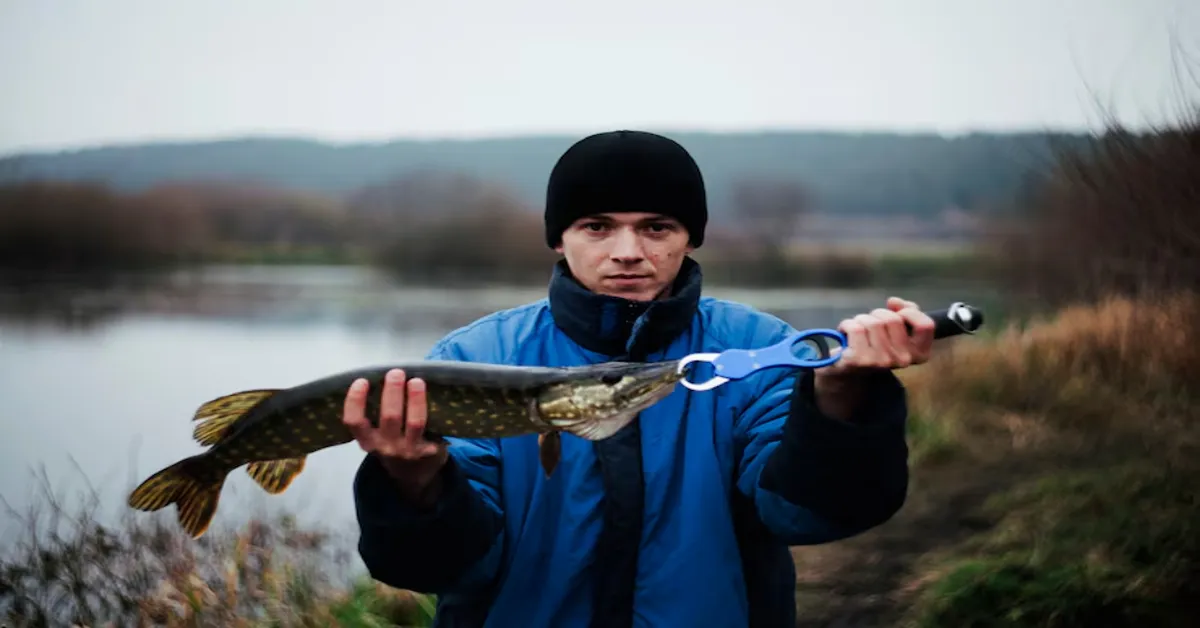Swords fishing, also known as swordfish fishing, refers to the highly specialized and skill-intensive practice of targeting swordfish (Xiphias gladius)—one of the most powerful, elusive, and prized game fish in the world. If you’re searching for what swords fishing is, how it works, and how it’s done today, this article offers a modern, in-depth understanding of everything from technique to conservation.
Swordfish are deep-sea predators, capable of great bursts of speed, endurance, and aggression. They are also among the few fish targeted both commercially and recreationally, using highly technical, evolving methods. Swords fishing is no longer a mystery to seasoned anglers, but it remains one of the ocean’s ultimate challenges.
Understanding the Swordfish: The Apex Deepwater Predator
Before diving into methods, gear, and strategy, it helps to understand the fish itself.
Swordfish, named for their long, flat, sword-like bills, are powerful swimmers found in temperate and tropical oceans worldwide. Unlike many deep-sea fish, they are endothermic, meaning they can regulate their brain and eye temperature—giving them sharper vision and more agility in cold, deep waters.
Key attributes of swordfish include:
- Average adult length: 9 to 12 feet
- Average weight: 200 to 600 pounds (record specimens exceed 1,000 pounds)
- Habitat depth: 1,800 to 2,100 feet during day; they rise closer to the surface at night
- Feeding behavior: Ambush predators, often attacking squid and small tuna
- Global range: Atlantic, Pacific, and Indian oceans; also common in the Mediterranean
Understanding the physiology and patterns of the fish is central to successful swords fishing.
The Evolution of Swords Fishing: From Harpoons to High-Tech
Historically, swordfish were pursued with hand-thrown harpoons from small boats off the coasts of Nova Scotia and New England. This labor-intensive, high-risk method was immortalized in literature like The Old Man and the Sea.
Modern swords fishing, however, has evolved dramatically:
- Longlining: Used by commercial vessels, involving miles-long lines with hundreds of baited hooks set at depth.
- Deep drop fishing: Recreational method using electric or manual reels to deploy weighted baits into the deep thermocline zones where swordfish dwell during daylight.
- Night drifting: Recreational method used primarily at night when swordfish rise to midwater levels; involves drift fishing with glowsticks and squid bait.
- Buoy gear: A method involving a vertical line attached to a floating buoy; often used for targeted, low-impact commercial fishing.
Modern technology—including sonar, GPS, thermal imaging, and electric reels—has made the pursuit more efficient, but swordfish remain notoriously difficult to hook and land.
Key Swords Fishing Techniques Explained
| Technique | When Used | How It Works |
|---|---|---|
| Daytime Deep Dropping | Daylight hours | Weighted baits dropped to 1,500–2,000 feet using electric/manual reels |
| Nighttime Drift | After sunset | Suspended baits drifted midwater with light sticks or submersible LEDs |
| Buoy Gear | Day and night | Fixed gear deployed vertically with baits and tracked via surface buoys |
| Harpoon Fishing | Daylight (visual hunting) | Sight-based targeting of basking swordfish from high lookout towers |
| Longlining | Commercial only | Extended horizontal lines set with hundreds of baited hooks at varied depths |
Each method carries different risks, skill requirements, and conservation implications.
Essential Gear for Swords Fishing
Swords fishing requires serious gear. This isn’t casual angling. Whether daytime dropping or nighttime drifting, the equipment must withstand extreme depths, enormous pressure, and sudden, violent strikes.
Core gear components:
- Reel: Electric (Lindgren-Pitman, Hooker Electric) or high-capacity manual 80W class reels
- Rod: Stand-up or bent-butt rods rated for 100+ lb test line
- Line: Braided line (600–1,000 yards), often with a fluorocarbon leader of 200–300 lb test
- Weights: 8 to 15 pounds to keep bait stable in strong currents
- Lights: Submersible LEDs, glow sticks, or chemiluminescent beads to attract swordfish
- Hooks: Circle hooks (non-offset) for conservation compliance
- Bait: Squid, mackerel belly, bonito strips, or customized artificial baits
- Wind-on leaders: Allow reeling the leader onto the spool for better control at the boat
Safety gear, fighting harnesses, and satellite tracking buoys are also essential for deep-sea fishing safety and efficiency.
Reading the Ocean: When and Where to Target Swordfish
Swordfish are highly migratory, and their movements are influenced by temperature, lunar phase, thermocline depth, and prey abundance.
Seasonal hot zones include:
- Florida Keys & Gulf of Mexico (year-round fishery)
- Southern California Bight (May to October)
- Puerto Rico & Eastern Caribbean (best during new moon cycles)
- Canary Islands & Mediterranean (summer and fall peak)
- Southwest Pacific near New Zealand (seasonal, winter months)
Best conditions include:
- New or dark moon phases (especially for night drift fishing)
- Thermocline edges or underwater seamounts
- Water temperatures between 58°F–74°F
- Low current drift conditions
Knowing when and where to fish is often more important than gear or technique.
The Fight: What It’s Like to Battle a Swordfish
Swordfish are not just heavy—they’re ferocious and unpredictable fighters. Unlike tuna that often dive deep and run horizontally, swordfish exhibit wild, erratic behavior:
- Repeated deep dives after initial hook
- Surface thrashing and tail-walking
- Sudden changes in direction
- “Lazy” behavior followed by explosive lunges when near the boat
- Intense final runs within 50 feet of the leader
Landing a swordfish can take 30 minutes to over 4 hours, depending on the fish, gear, and angler’s skill. Even experienced crews lose many battles.
This is why swordfish are often called the gladiators of the sea.
Sustainability and Conservation Concerns
Swordfish stocks have rebounded in many parts of the world thanks to regulatory changes. However, the method of catch still plays a crucial role in sustainability.
Best practices include:
- Using circle hooks to reduce deep hooking
- Tag and release programs for undersized or non-target catches
- Avoiding longlining in breeding zones
- Choosing harpoon or buoy gear when possible
- Following ICCAT and NOAA regulations for sizes and quotas
Swordfish can take 5 to 7 years to mature and reproduce, making ethical fishing practices vital to their continued health.
Swordfish in Cuisine and Culture
Swordfish is a globally cherished delicacy, known for its firm, steak-like texture and mild, meaty flavor. It’s featured in cuisines across the Mediterranean, Japan, the Caribbean, and North America.
Popular preparations include:
- Grilled swordfish steaks with lemon or herb butter
- Swordfish sashimi or tataki (rare, high-grade fish)
- Swordfish kebabs with vegetables
- Swordfish escabeche in Latin and Spanish cooking
- Lightly smoked swordfish for sandwiches and charcuterie
Culturally, the swordfish represents nobility, endurance, and mastery of the sea. In sportfishing circles, landing a swordfish is considered a lifelong achievement.
Challenges and Risks in Swords Fishing
The pursuit of swordfish is not without its hazards. Anglers and crews face:
- Equipment failure under pressure
- Rogue waves and deep-sea conditions
- Shark depredation during retrieval
- Fatigue and dehydration during multi-hour fights
- Navigational challenges at night in open waters
- Bycatch (unintended capture of sharks or sea turtles)
Preparation, crew coordination, and weather forecasting are as important as gear. As any veteran will say: swords fishing punishes the unprepared.
The Role of Technology in Modern Swords Fishing
Today’s swordfish anglers use tools that were unimaginable decades ago:
- Multibeam sonar to map thermoclines and bait clouds
- Real-time satellite charts for temperature and chlorophyll
- Electric reels with line counters and drag sensors
- Night-vision drones for visual swordfish tracking
- Blockchain-integrated tracking for catch verification
- AI-based drift prediction models to reduce wasted time and bait
This tech brings both accessibility and ethical transparency to a historically elite and opaque sport.
Swordfish Fishing: Myth vs. Reality
| Myth | Reality |
|---|---|
| Swordfish are aggressive and easy to find | Swordfish are elusive, and bites can take hours to days |
| Only commercial boats can catch swordfish | Many recreational anglers succeed with proper gear and local knowledge |
| Swordfish taste “fishy” | When fresh and properly cut, swordfish is mild and ideal for grilling |
| It’s dangerous and reckless | With planning and respect, it’s a safe and legal sport under regulation |
Final Thoughts: Swords Fishing as the Ultimate Test of Patience, Skill, and Respect
Swords fishing is more than sport. It’s a ritual of patience, precision, and intimate knowledge of the ocean. For those who pursue swordfish, the reward isn’t just in the catch—it’s in the connection with wild waters, ancient species, and human resilience.
Whether you’re a curious beginner, an experienced mariner, or someone captivated by the legacy of sea adventure, swords fishing remains one of the last great tests of skill and sea-readiness.
And in a world dominated by speed and ease, that makes it all the more meaningful.
ALSO READ: Incellderm: Inside the Korean Skincare Brand Blending Science, Innovation, and Simplicity
Frequently Asked Questions (FAQs)
1. Is swords fishing legal everywhere?
No. Swordfish fishing is regulated by international and national fisheries organizations. Some regions restrict gear types or enforce seasonal closures to protect breeding grounds.
2. Can beginners try swords fishing?
Yes, but it’s advised to go with a charter or experienced guide. The gear, depth, and physical demands are not beginner-friendly without support.
3. What’s the best bait for swordfish?
Squid is the most universally effective. Some anglers also use bonito, dolphin belly, or specially prepared artificial lures with scent.
4. Are swordfish endangered?
No, but some regional populations are under stress. Thanks to regulation, North Atlantic swordfish have made a strong comeback, though sustainability depends on ongoing responsible practices.
5. How much does a swordfish weigh on average?
Most caught swordfish range between 150 and 400 pounds. Exceptional specimens can exceed 1,000 pounds, though these are rare and usually offshore.









